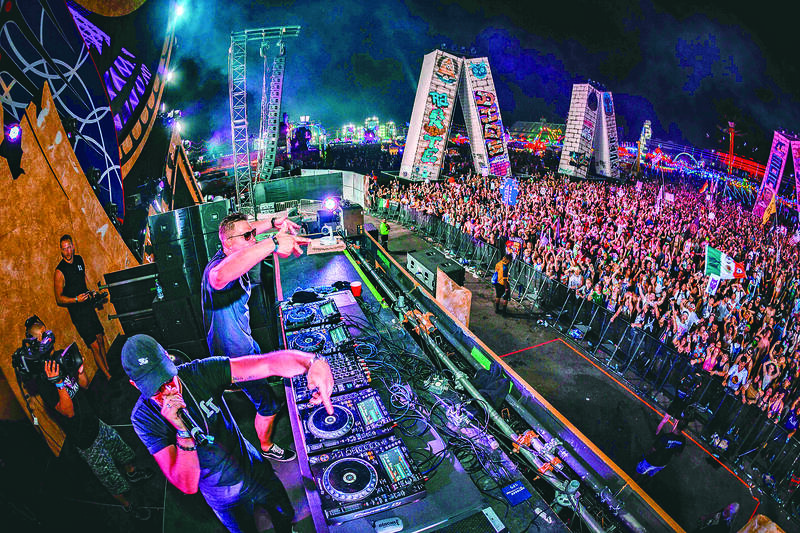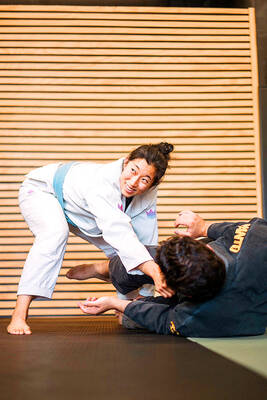A horrifying tragedy unfolded on Halloween last year when around 100,000 young people filled the narrow streets of Itaewon, a popular nightlife district in Seoul, South Korea. People became trapped in the confined space of the street. Some were crushed against walls. Others were trampled by the panicking crowd. Unable to breathe, over 150 people died and over 100 more were injured. Unfortunately, crowd crushes like this do happen. So, how can you recognize when a crowded situation is becoming dangerous, and what can you do in this scenario?
Crowds can be measured in terms of density; that is, the number of people per square meter. When that number reaches six, then crowds become a hazard. It’s hard to assess this, though, so it’s better to pay attention to physical signs. If you’re not in physical contact with anyone, or only bump into one or two others, then the situation is reasonably safe. However, if you can’t move your hands freely, you could be in danger. It’s at this point that people are forced to move, and the crowd has become impossible to control.
If you’re unfortunate enough to be in this predicament, there are several things you can do. First, if the crowd is moving, move with it rather than against it. Stay calm, move quickly but without shoving, and try to get to where the crowd is thinnest. Second, stay away from walls, pillars, and other solid structures, as you could be crushed against them. In addition, it’s recommended that you fold your arms in front of you to protect your chest. Finally, fight the urge to scream for help and save your oxygen.

PHOTO COURTESY OF UNSPLASH / 照片:UNSPLASH 提供
If you do fall, adopt the fetal position. Lay on your side and put your arms over your face and chest. Curve your back and tuck your head down. Bend your knees and draw your legs up. Remain rigid until the danger has passed. One last thing to remember is that a crowd is more likely to stay safe if everyone works together. If you can help others without endangering yourself, do so, and you may become someone’s hero.
去年萬聖節,在南韓首爾的夜生活鬧區「梨泰院」的狹窄街道中,擠滿了大約十萬名年輕人,演變成一場可怕的悲劇。人們被困在街道有限的空間裡。有些人被壓在牆上,其他人則被驚慌失措的人群踩踏。因為無法呼吸,導致超過一百五十人死亡,且超過一百人受傷。不幸的是,像這樣的人群推擠事故確實發生了。所以,你該如何辨別擁擠情況何時變得危險,以及在這種情況下你該怎麼做?
人群可以根據密度來衡量;也就是每平方公尺的人數。當這個數字達到六時,人群就會產生危害。但是,很難對此進行評估,因此最好注意身體上的警訊。若你未與任何人有肢體接觸,或者只撞到一兩個人,那麼情況相當安全。但倘若你的手無法輕易活動,你可能就危險了。正是此時,人們被迫移動,人群變得無法控制。
若你不幸陷入這種困境,你可遵循以下幾件事。首先,如果人群在移動,就順著移動而不是逆向。保持冷靜,快速移動但不要推擠,並儘量到人群最稀疏的地方。其次,遠離牆壁、柱子和其他堅固的建築物,因為你可能會在這些地方被壓扁。此外,建議你將雙臂交叉放至身前,以保護胸腔。最後,克制尖叫求救的衝動以減少氧氣消耗。
若你真的跌倒了,請採取胎兒姿勢。側臥,將雙臂放至臉和胸前。彎曲你的背部並低下頭。屈膝並將雙腿向上拉。維持不動直到危險過去。最後要記住的是,如果所有人一起行動,人群就更有可能保持安全。如果你能在不危及自己的情況下幫助別人,那就去做吧,你可能會成為某人的英雄。
MORE INFORMATION
trample v. 踐踏;侵犯
predicament n. 困境;窘境
tuck v. 將……塞進;將……藏入
KEY VOCABULARY
1. horrifying adj. 可怕的;令人恐懼的
A horrifying car crash happened on this road a few years ago; many people died.
幾年前這條路上發生了一場可怕的車禍;造成很多人死亡。
2. unfold v. 發展;展開
Jenny had to keep reading the book to find out how the story would unfold.
珍妮必需繼續閱讀這本書來得知故事如何發展。
3. district n. 區域;地帶
There are many houses and small shops in this residential district. 這個住宅區有許多的房屋及小商店。
4. crush n.(擁擠的)人群;迷戀/v. 擠壓;粉碎
crowd crush 人群推擠事故
The crush at the concert was bad, because there were so many people there. 演唱會的人潮很糟,因為現場太多人了。
5. density n. 密度
The density of people at the train station is highest at around 6pm. 這座火車站大約晚上六點時人流最高。
6. shove v. 推擠;亂放
The children on the playground were shouting at and shoving each other. 遊樂場上的孩童們彼此互相叫罵與推擠。
7. oxygen n. 氧氣;氧
Roughly 99 percent of the human body is composed of six common elements, including oxygen, carbon, and hydrogen. 人體大約百分之99由六種常見元素組成,包括氧、碳和氫。
8. curve v. 彎曲
The roofs of many Asian temples curve up at the corners.
許多亞洲廟宇的屋頂都會在角落處向上彎曲。
9. rigid adj. 堅硬的;頑固的
Metal is rigid when it’s cold, but it will melt if you get it extremely hot.
金屬於低溫時是堅硬的,但如果將其置於極高溫下則會熔化。
學習音檔: https://magazine.english4u.net/Magdata/menu/0o3lv
《空中美語》雜誌APP免費下載: https://www.english4u.net/apps/index.aspx
免費收聽當月《空中美語》雜誌課文朗讀及解析 !
文章由AMC空中美語授權使用: https://www.english4u.net

Historians are rethinking the way the Holocaust is being presented in museums as the world marks the 80th anniversary of the liberation of the last Nazi concentration camps this month. Shocking images of the mass killings of Jews were “used massively at the end of World War II to show the violence of the Nazis,” historian Tal Bruttmann, a specialist on the Holocaust, told AFP. But in doing so “we kind of lost sight of the fact that is not normal to show” such graphic scenes of mass murder, of people being humiliated and dehumanized, he said. Up to this

A: Brazilian jiu-jitsu, known as “BJJ,” has become more and more popular. Even Hollywood stars like Halle Berry and Tom Hardy are obsessed with it. B: Some Asian stars, such as Taiwanese actor Eddie Peng and South Korean actor Lee Joon-gi, have also practiced this martial art. A: BJJ is not just a martial art, but also a combat sport. B: I’ve always wanted to try it, but I’m worried about getting injured. A: Diana Wang, a US doctor of physical therapy, is holding a BJJ seminar at PMA Brazilian Jiu-jitsu in Taipei Friday night. Let’s go check out how we

When people listen to music today, they typically use streaming services like YouTube or Spotify. However, traditional formats like vinyl records have regained popularity in recent times. Vinyl records are circular discs that store music in grooves on their surfaces and are played on a turntable. As the turntable’s needle runs along these grooves, it picks up vibrations and translates them into sound. The history of vinyl records dates back to the late 1800s, but material and technological challenges delayed mass production until the 1950s. Despite early versions having short playtimes and poor sound quality, vinyl records introduced a new era

A: Actually, Brazilian jiu-jitsu is particularly good for small people like you. B: Really? How so? A: According to Diana Wang, a US doctor of physical therapy, the BJJ’s purpose is to help smaller, weaker people defend themselves by using various techniques, such as leverage. B: That sounds interesting. What time does Dr Wang’s BJJ seminar begin tonight? A: The event is scheduled for 7:30pm at PMA Brazilian Jiu-jitsu in Taipei. Admission is free, but donations are welcome. A: 其實你的個子比較小,很適合練巴西柔術呢。 B: 真的嗎?為什麼? A: 據美國理療醫師王幼瑞博士說,巴西柔術的概念是讓弱小的人,也能利用槓桿作用等技巧防身。 B: 真有趣,王醫師的巴柔研討會幾點開始? A: 今晚7點半在「台北巴柔運動館」,免費入場自由樂捐唷! (By Eddy Chang, Taipei Times/台北時報張迪)